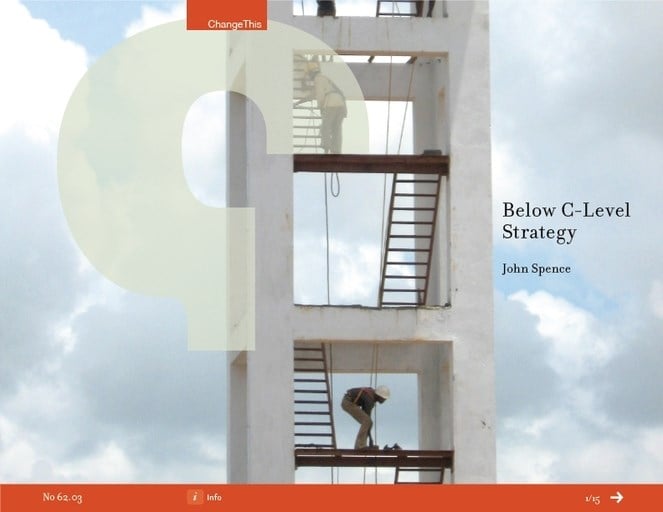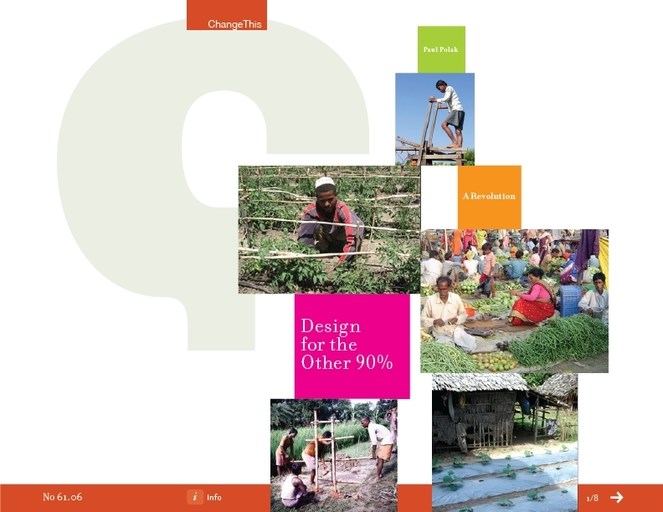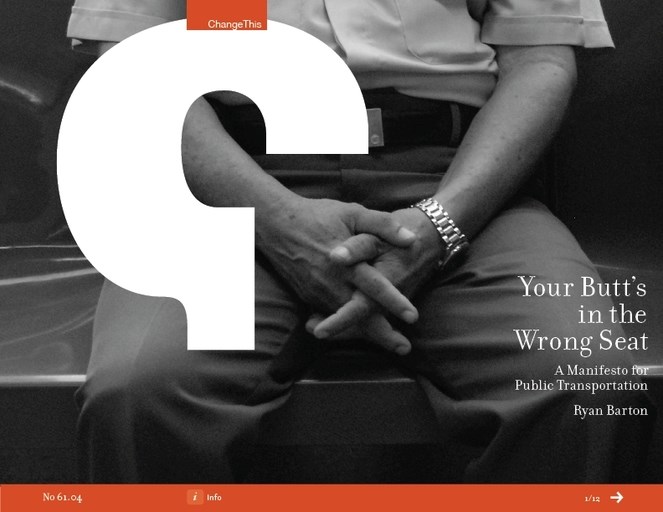ChangeThis RSS
"The CEO and her senior management team have just come back from a three-day offsite in Palm Beach with the new 'global strategy' and now it's your job as a business-line or mid-level manager to figure out how to take these lofty ideas and long-term plans and build an organization to effectively implement them in the real world. Or, you're a small business owner/manager and may never have had a 'three-day strategy off-site' at a high-end resort, but you still need to figure out how to create a company that can profitably compete in the marketplace. This sort of a situation calls for a different type of strategy, one that is less about looking at 'external' factors like differentiation and positioning; and more about looking at the 'internal' strategies of how to build an agile organization that can flawlessly execute on the key business objectives. This sort of strategic planning requires someone who is down in the trenches and understands how the business really works, far away from the ivory tower. Whereas C- level strategic planning is for people that 'make' budgets; below C-level strategic planning is for those of us that are given a budget. Folks at the C-level make broad reaching decisions that direct people and departments across the entire organization, while those of us below C-level often have to focus on the few places within the organization where we do have impact, influence and some level of control. Luckily, the most important strategies for creating a highly successful organization fall into a handful of key result areas, most of which are completely within your control."
Continue reading
"You've heard about IQ and EQ. But what's your CQ? CQ, or cultural intelligence, is more than just a kitschy catch phrase for cultural competence. It's a fresh, new approach to leading in our multicultural, globalized world. Cultural intelligence is defined as the capability to function effectively across national, ethnic, and organizational cultures. And research demonstrates a leader's CQ may easily be the single greatest difference between thriving in the 21st century world and becoming obsolete."
Continue reading
"Ninety percent of the world's designers spend all their time working on solutions to the problems of the richest 10 percent of the world's customers.
A revolution in design is needed to reverse this silly ratio and reach the other 90 percent. In my book, Out of Poverty, I talk about how this can be done. I pull stories from some of the 17 million people I've help lift from poverty with the organization I founded 25 years ago, International Development Enterprises. More recently, we have incorporated an organization called D-Rev: Design for the Other Ninety Percent, whose mission is to create the design revolution."
Continue reading
"Education shouldn't be about adding more to our lists of HAVE's, DO's , and BE's, but rather thinking outside the lines, intentionally about the BE's, DO's, and HAVE's that matter most.
The 21st century world needs learners to BE critical, BE creative, and BE strategic. The 21st century world demands learners to DO their own thinking, rather than relying on someone else to think for them. The 21st century world expects learners to HAVE the endurance, fortitude, and courage to brave through each new challenge with confidence and competence."
Continue reading
"It's not sexy. It's not tracking as a Twitter trend. And it's not a YouTube sensation.
In fact, by current reputation, it's dirty, it (sometimes) smells, it forces you to interact with people you don't know, it's slow, and inconvenient. But it shouldn't be.
Or at least, it shouldn't be positioned and marketed like it is.
Here's the problem with 'it.' Its competitors are some of the largest, most renowned companies in the world, and despite the current 'crisis' affecting the automobile industry, it doesn't stand a chance. 'It' is public transportation, and 'it' is hurting.
So what's the problem? It's simple; your butt is in the wrong seat."
Continue reading










